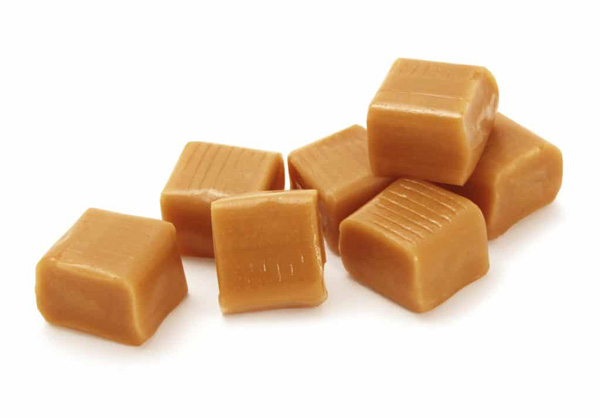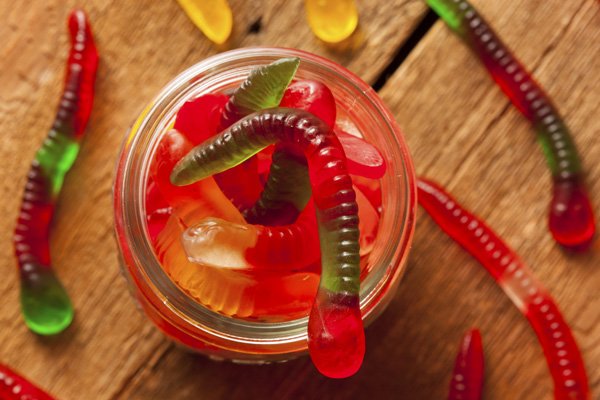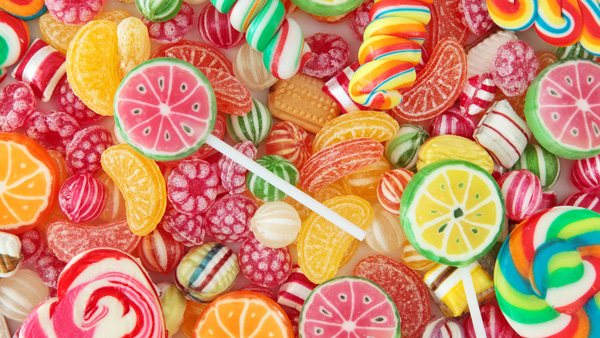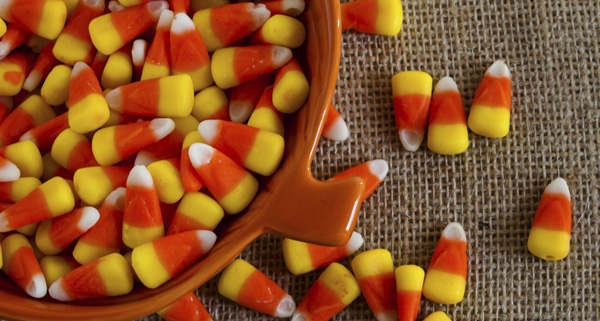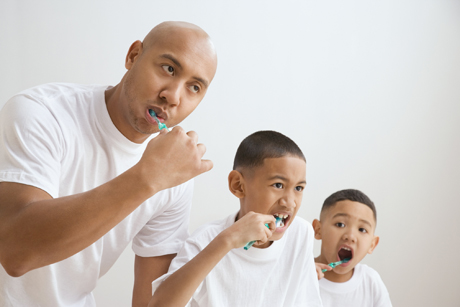As a parent, you may have more in common with your dentist than you think. Many moms and dads—even dentists—struggle to keep their children’s mouths and teeth clean. ADA dentist Dr. Gene Romo is a father of four – ages 13, 10, 8 and 2. “As you can imagine, there can be a wide range of behavior on who wants to brush and who doesn’t in our house,” he says. “I’m not just a dentist, I’m their dad, so making sure they’re establishing good habits early on is important to me.”
To keep your family’s smiles strong, try some of tricks of the trade from dentist moms and dads:
Establish a Fun Family Routine
In Dr. Romo’s house, there’s one rule everyone follows: “You have to brush before bed, and you can’t leave the house in the morning until you brush,” he says. “The most important thing is to make sure your family is brushing for 2 minutes, twice a day.”
Young kids love to imitate their parents, so take the opportunity to lead by example. “One thing I did with all my kids was play a game with them, kind of like monkey-see, monkey-do. We all have our toothbrushes, and they follow what I do,” he says. “When I open my mouth, they open their mouths. When I start brushing my front teeth, they start brushing their front teeth – and so on all the way until it’s time to rinse and spit. It’s just a fun way to teach them how to brush properly, and we get to spend a little time together, too.”
Making brushing a family affair also helps you keep an eye out for healthy habits. “Some kids want to do everything themselves, even toothpaste, so you can watch to make sure they’re not using more than they should – a rice-sized smear for kids 2 and under and a drop the size of a pea for kids 3 and up,” he says. “You can also do a quick final check for any leftover food when brush time is done.”
Try a New Angle
When her daughter was only 6 months old, ADA dentist Dr. Ruchi Sahota asked her husband to hold her while she brushed or brushed when her daughter was laying down. “You can see their teeth from front to back the best at that time,” she says.
If your child is old enough to stand and wants to brush in the bathroom, ADA dentist Dr. Richard Price suggests a different method. “Stand behind your child and have him or her look up at you,” he says. “This causes the mouth to hang open and allows you to help them brush more easily.”
Bigger Kids, Bigger Challenges
Checking up on your child’s daily dental hygiene habits doesn’t end as they get older. It’s more challenging when they get their driver’s license and head off to college, says ADA dentist Dr. Maria Lopez Howell. “The new drivers can drive through any fast food spot for the kinds of food and beverages that they can’t find in a health-minded home,” she says. “The new college student is up late either studying or socializing. They don’t have a nightly routine, so they may be more likely to fall asleep without brushing.”
While your children are still at home, check in on their brushing and talk to them about healthy eating, especially when it comes to sugary drinksor beverages that are acidic. After they leave the nest, encourage good dental habits through care packages with toothbrushes, toothpaste or interdental cleaners like floss with the ADA Seal of Acceptance. And when they’re home on break, make sure they get to the dentist for regular checkups! Or if school break is too hectic– you can find a dentist near campus to make sure they are able to keep up with their regular visits.
Play Detective…
As your children get older, they’re probably taking care of their teeth away from your watchful eye. Dr. Romo asks his older children if they’ve brushed, but if he thinks he needs to check up on them, he will check to see if their toothbrushes are wet. “There have been times that toothbrush was bone dry,” he says. “Then I’ll go back to them and say, ‘OK, it’s time to do it together.’”
If you think your child has caught on and is just running their toothbrush under water, go one step further. “I’ll say, ‘Let me smell your breath so I can smell the toothpaste,’” he says. “It all goes back to establishing that routine and holding your child accountable.”
…And Save the Evidence
It could be as simple as a piece of used floss. It sounds gross, but this tactic has actually helped Dr. Lopez Howell encourage teens to maintain good dental habits throughout high school and college.
To remind them about the importance of flossing, Dr. Lopez Howell will ask her teenage patients to floss their teeth and then have them smell the actual floss. If the floss smells bad, she reminds them that their mouth must smell the same way. “It’s an ‘ah-ha’ moment,” Dr. Lopez Howell explains. “They do not want to have bad breath, especially once they see how removing the smelly plaque might improve their social life!”
Above All, Don’t Give Up
If getting your child to just stand at the sink for two minutes feels like its own accomplishment (much less brush), you’re not alone. “It was so difficult to help my daughter to brush her teeth because she resisted big time,” says ADA dentist Dr. Alice Boghosian. Just remember to keep your cool and remain persistent.
“Eventually, brushing became a pleasure,” Dr. Boghosian says. She advises parents to set a good example by brushing with their children. “Once your child is brushing on their own, they will feel a sense of accomplishment – and you will too!”
From the American Dental Association
